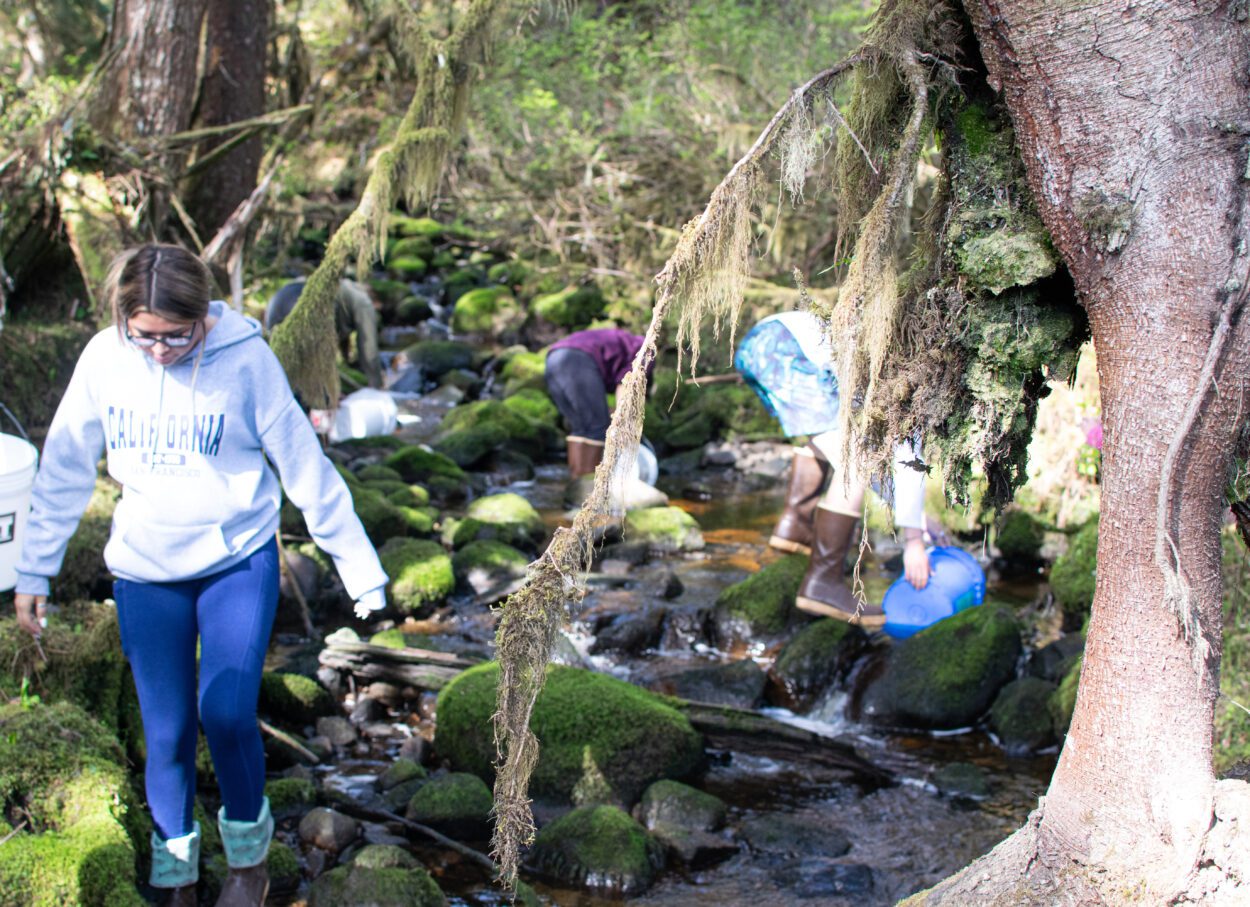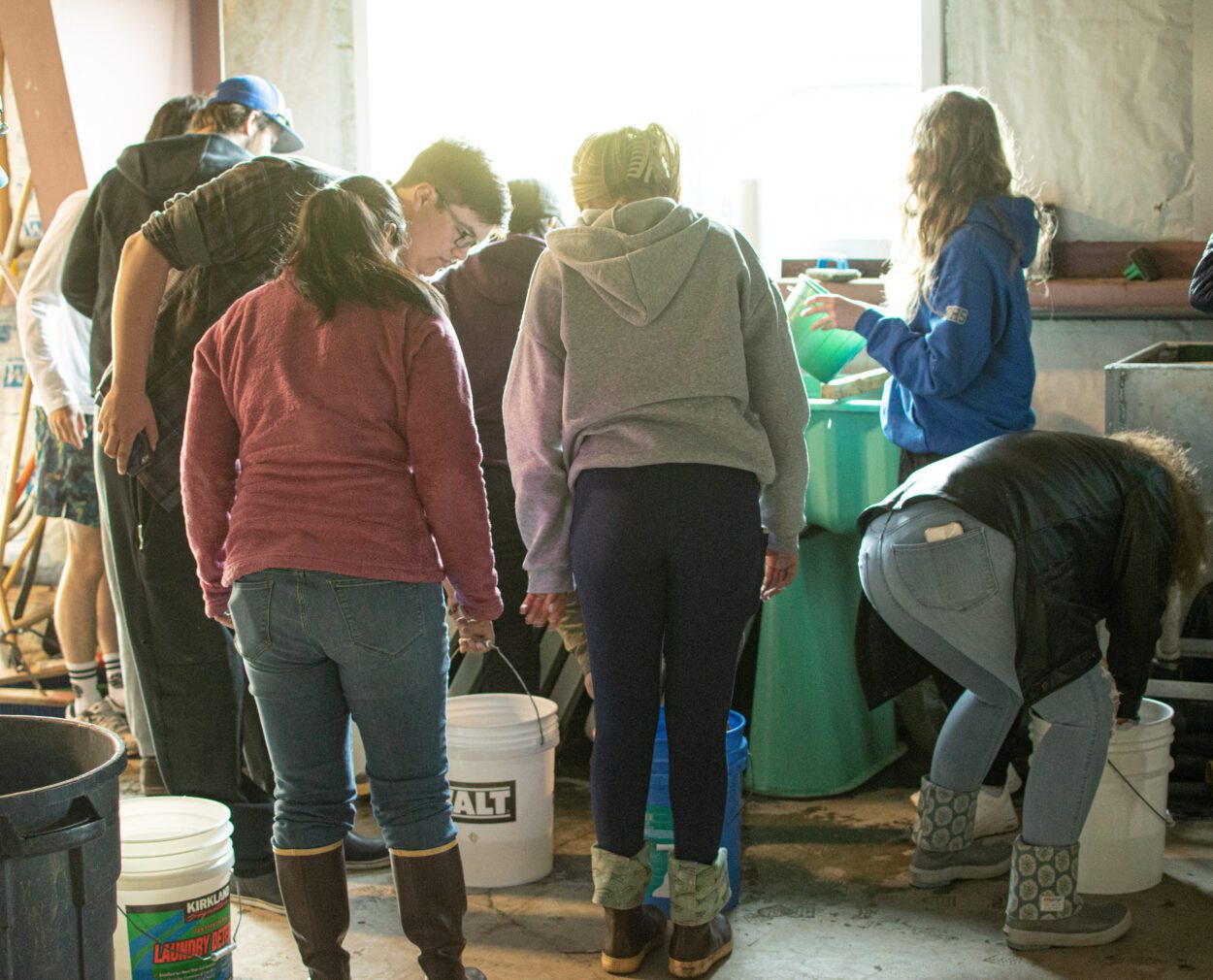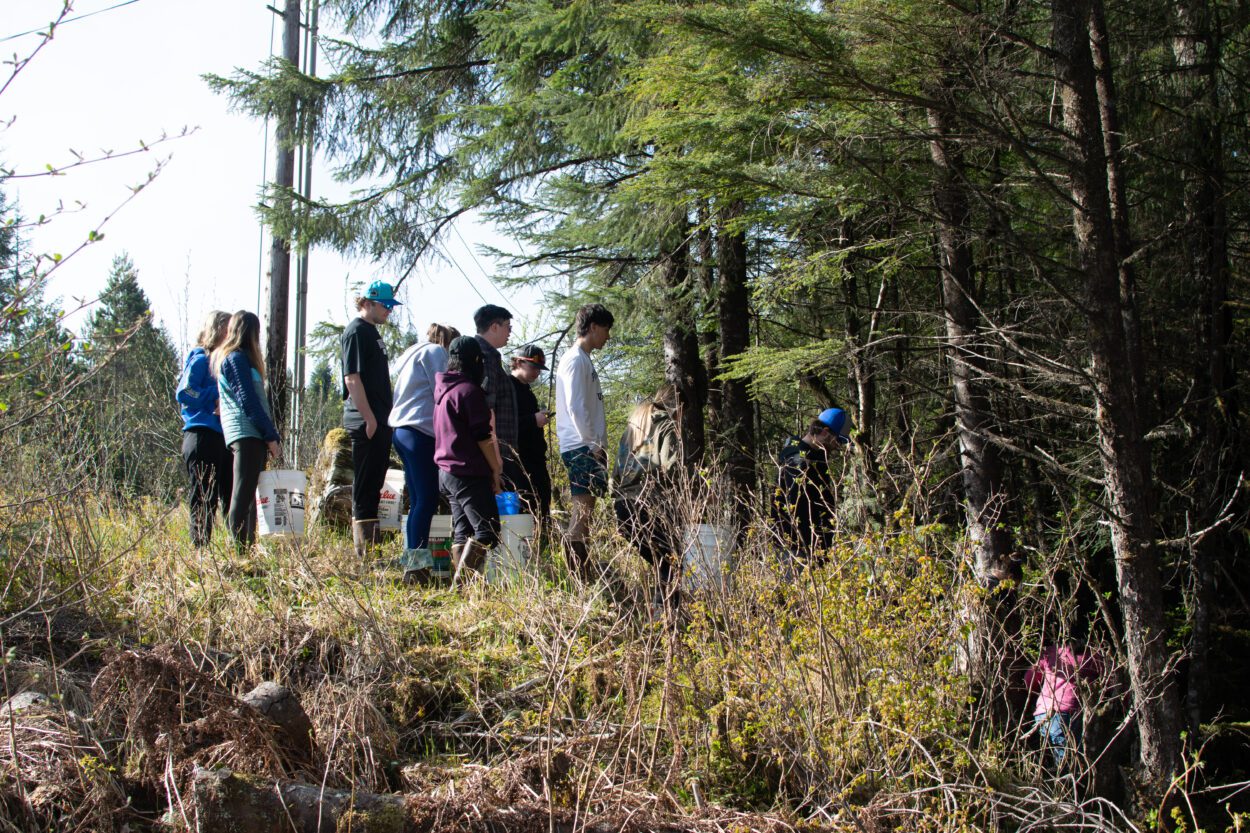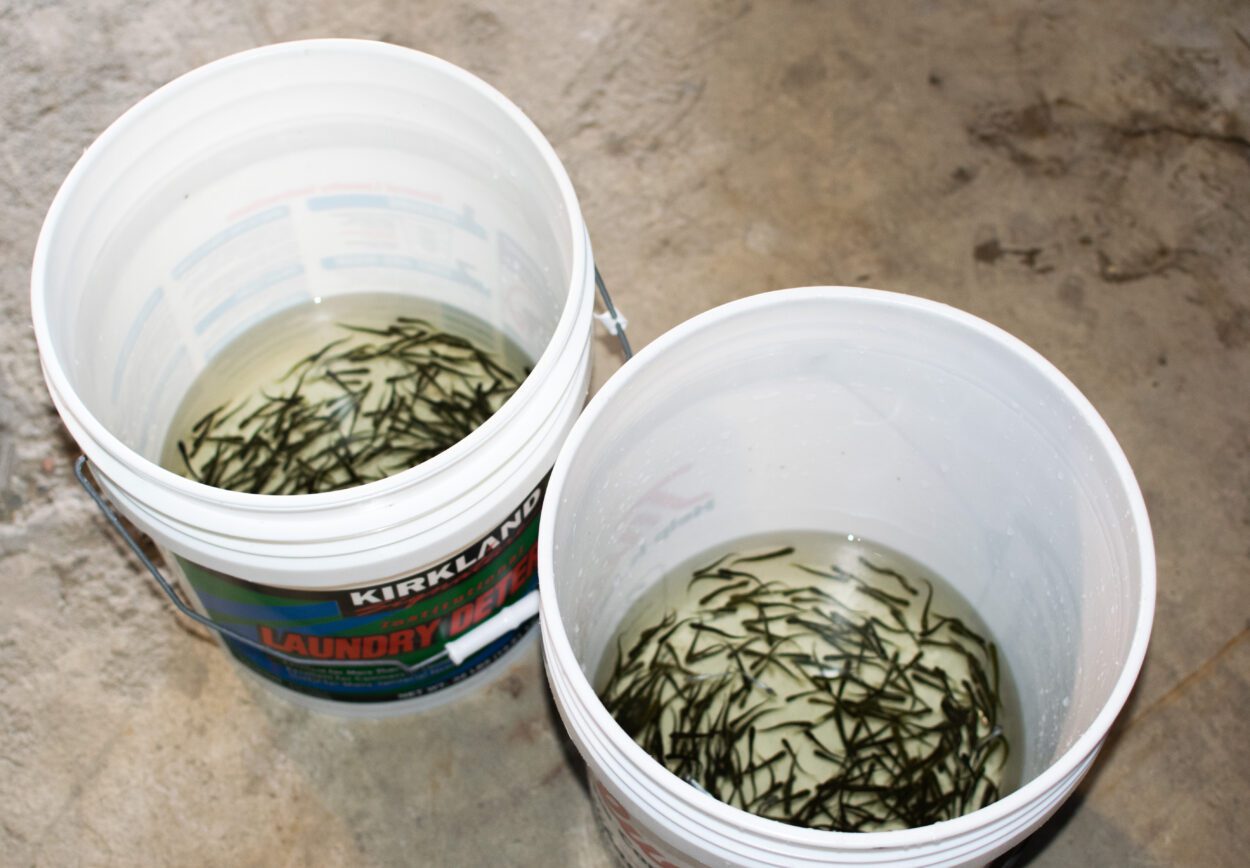
School is almost out for winter vacation. But in one Petersburg classroom, a school just started — a school of fish hatched by high schoolers.
Every year, Petersburg High School students vie for the chance to take an aquaculture class, where they learn about fish that sustain the local seafood economy — and they do that by raising and releasing salmon into the wild, themselves.
KFSK’s Shelby Herbert followed the class over the last year and brings us this story.
About a dozen students are peeking over the sides of two enormous tanks at Petersburg’s water treatment facility in May. The air is thick with the smell of mud and algae from the pond water gurgling through the tanks — and the odor of fish.
Hundreds of pink salmon fry — just about the size of a child’s finger — are darting around the murky water. The teens are tasked with gently catching all of them with tiny nets and plopping them into several five-gallon buckets of water.
It’s a painstaking process, but it only takes them about an hour. Some of the fish are dead — or rapidly approaching death.

(Photo by Shelby Herbert/KFSK)
Once they’ve collected all the fish they’ve raised over the last year, the students load up their buckets onto a school bus. Alice Cumps is a science teacher at Petersburg High School, and she’s taught the aquaculture class for close to a decade. She drives the students a short distance to a creek a couple miles out of town. When they arrive, she leads them through the thick forest to a shallow eddy.
“Take your buckets and very gently lay it horizontally in the water and let the fish swim out,” Cumps calls to her students. “The wrong way is to just dump in the stream!”
The students begin trying to coax the fish out of the buckets and into the stream — which they have explicit permission from the local Alaska Department of Fish and Game office to do. But while they wade through the mud and try to dodge the devil’s club crowding the creek, some of them are struggling with the task at hand.
Despite their objections today, it’s a massively popular class. Cumps says a lot of kids compete for spots in her aquaculture course every year.
“Unfortunately, I’m restricted in keeping my [class] number down to 14,” said Cumps. “But yeah, I’ve got a lot of kids that want to take it because it is so hands-on.”
But Cumps says the class isn’t just about field trips and messy fun outside. It’s preparing them for the real deal — careers in the fishing industry after graduation. Through the high school’s partnership with the University of Alaska Southeast, students can earn technical education credits for the class, alongside standard high school credits.
“It’s a great class for kids that might be thinking about doing this as a career,” said Cumps. “And the idea really is that students might decide to go to a technical school, preferably in the state of Alaska, and continue their education and then they could work at a hatchery.”
In addition to learning about biology, the class is helping state fish biologists learn more about the health and genetics of the fish in the area.
“They always ask us, at the same time, to collect samples, so we collect ovarian fluid and kidney samples from the salmon,” said Cumps. “We send that to the state up in Juneau. They have a pathology lab, and they run some tests so that they have an idea of what bacteria might be prevalent in the population in the wild run.”
Even after almost a decade of teaching, Cumps says the class is still very dear to her. And part of that is because it’s so intertwined with the local culture.
“I really like it because it involves so much of what Petersburg is about,” said Cumps. “The borough has such a rich history and economy based on fisheries.”

(Photo by Shelby Herbert/KFSK)
Charlotte Martin is a senior this year at Petersburg High School. Last spring at the creek, she said she wasn’t sure about what she’ll do when she graduates. But she’s enjoyed the hands-on learning experience in Cumps’ outdoor classroom. Martin says it was rewarding to see the pinks transition through their earliest stages of life. But it’s hard not to get a little attached.
“They’re really cute,” said Martin. “I mean, yeah, we saw them when they were eggs till now, so we’re kind of attached to them. I guess I’m happy for them.”
A new crop of pink salmon hatched last month in Cumps’ classroom. The tiny fish are still attached to bright orange yolk sacs, which they’ll absorb over the next couple months. In this second stage of life, they’re called “alevin.”
“Today was our first day actually that we found some that have hatched. So we have a few little alevin. The kids are excited!”
The pinks will be ready for release in late spring. That’s right around the time Charlotte Martin and her cohort will graduate high school, and start their own journey into the great, wide world.

(Photo by Shelby Herbert/KFSK)











